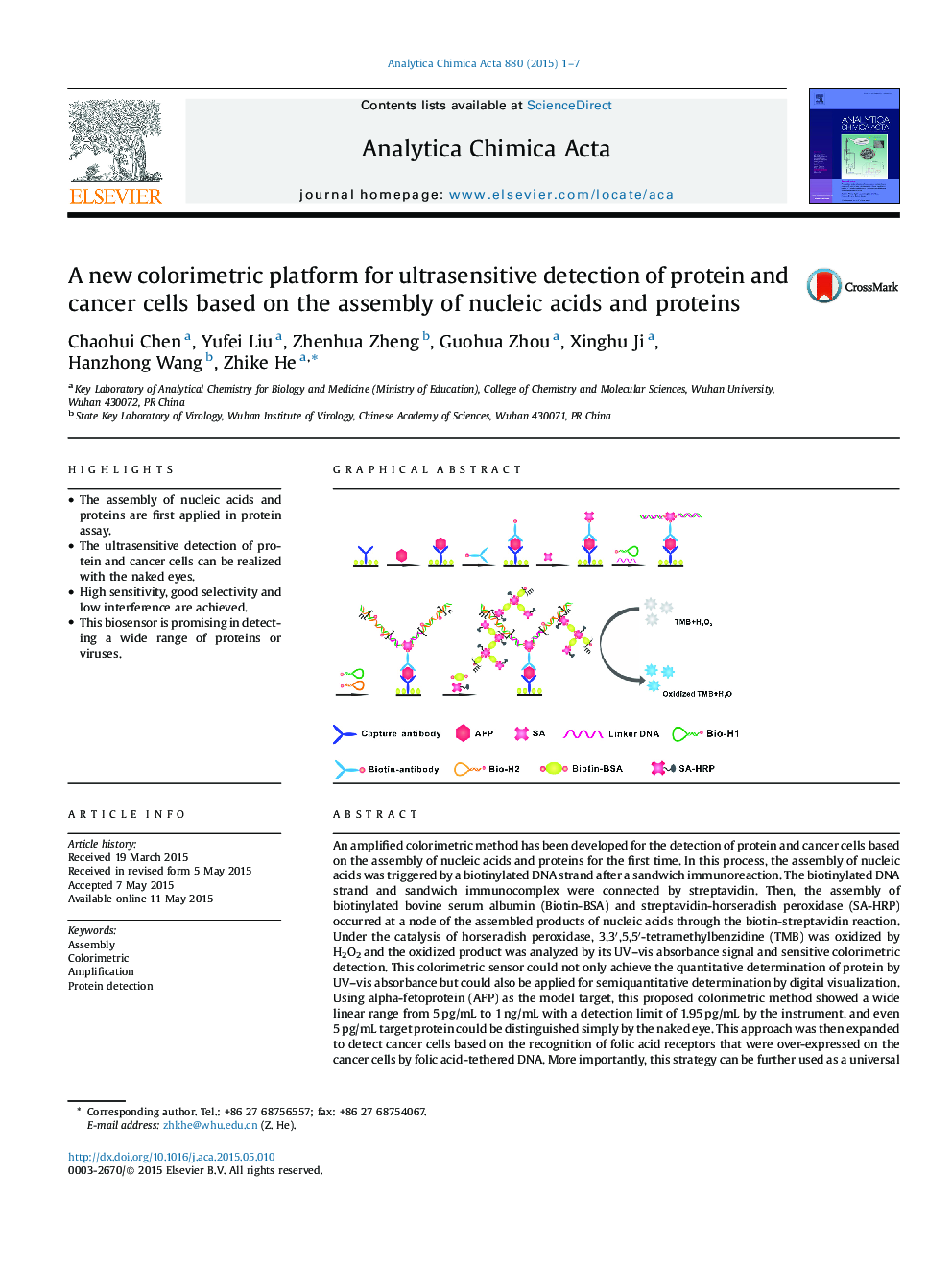| کد مقاله | کد نشریه | سال انتشار | مقاله انگلیسی | نسخه تمام متن |
|---|---|---|---|---|
| 1163283 | 1490952 | 2015 | 7 صفحه PDF | دانلود رایگان |
• The assembly of nucleic acids and proteins are first applied in protein assay.
• The ultrasensitive detection of protein and cancer cells can be realized with the naked eyes.
• High sensitivity, good selectivity and low interference are achieved.
• This biosensor is promising in detecting a wide range of proteins or viruses.
An amplified colorimetric method has been developed for the detection of protein and cancer cells based on the assembly of nucleic acids and proteins for the first time. In this process, the assembly of nucleic acids was triggered by a biotinylated DNA strand after a sandwich immunoreaction. The biotinylated DNA strand and sandwich immunocomplex were connected by streptavidin. Then, the assembly of biotinylated bovine serum albumin (Biotin-BSA) and streptavidin-horseradish peroxidase (SA-HRP) occurred at a node of the assembled products of nucleic acids through the biotin-streptavidin reaction. Under the catalysis of horseradish peroxidase, 3,3′,5,5′-tetramethylbenzidine (TMB) was oxidized by H2O2 and the oxidized product was analyzed by its UV–vis absorbance signal and sensitive colorimetric detection. This colorimetric sensor could not only achieve the quantitative determination of protein by UV–vis absorbance but could also be applied for semiquantitative determination by digital visualization. Using alpha-fetoprotein (AFP) as the model target, this proposed colorimetric method showed a wide linear range from 5 pg/mL to 1 ng/mL with a detection limit of 1.95 pg/mL by the instrument, and even 5 pg/mL target protein could be distinguished simply by the naked eye. This approach was then expanded to detect cancer cells based on the recognition of folic acid receptors that were over-expressed on the cancer cells by folic acid-tethered DNA. More importantly, this strategy can be further used as a universal colorimetric method for the determination of viruses or other proteins by changing the corresponding antibodies.
Figure optionsDownload as PowerPoint slide
Journal: Analytica Chimica Acta - Volume 880, 23 June 2015, Pages 1–7
